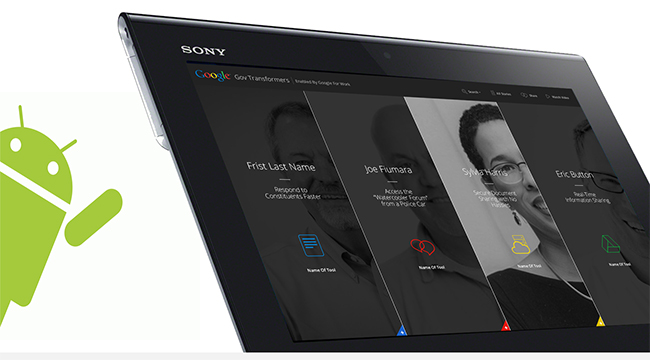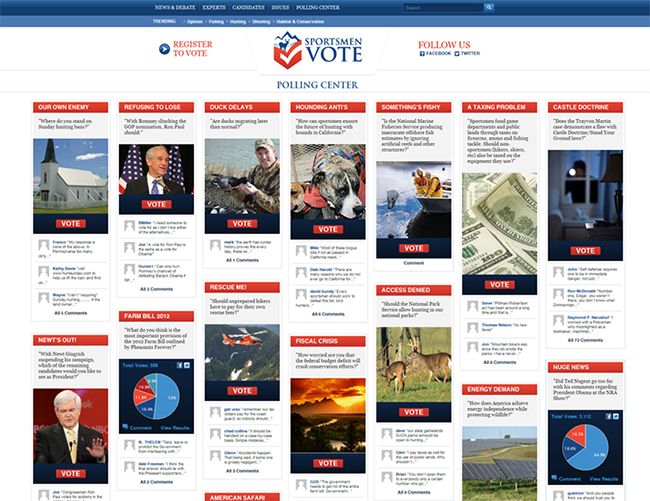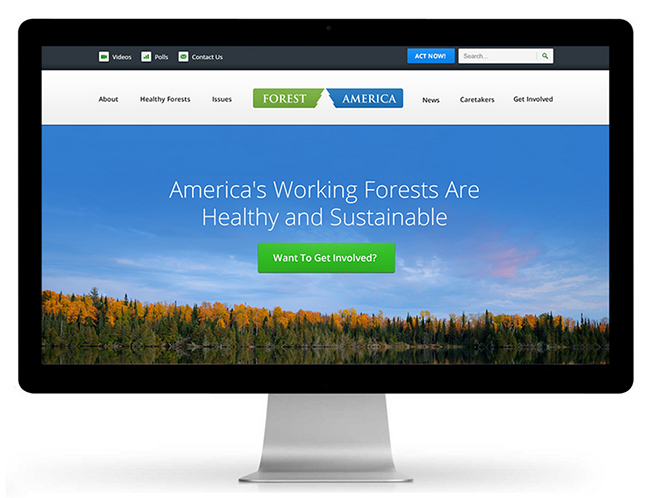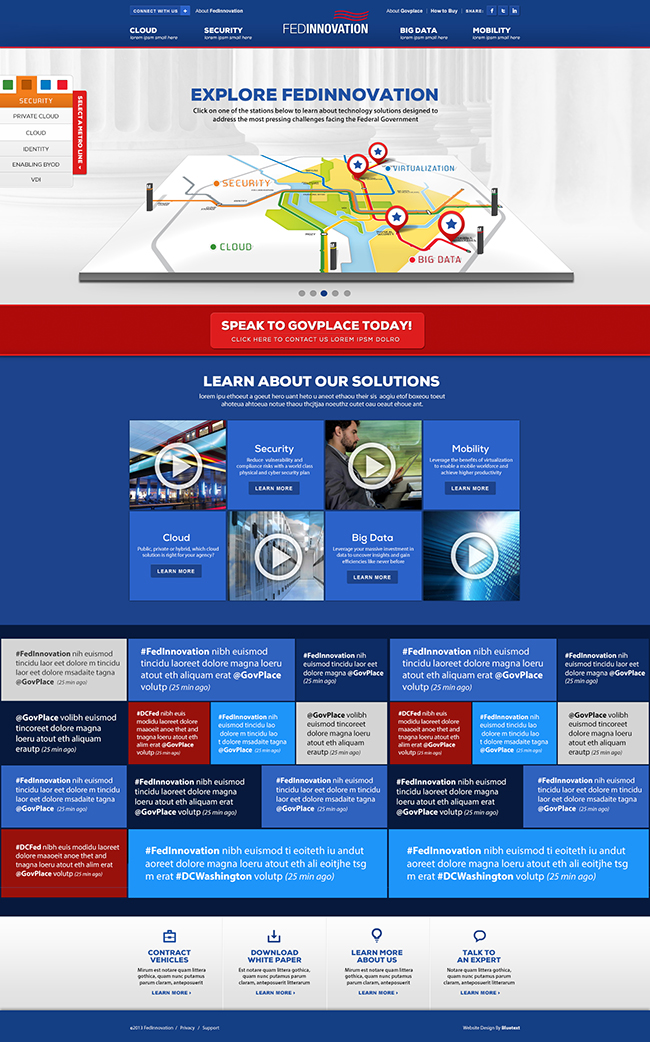On Friday night, Georgetown’s McDonough School of Business kicked off its alumni weekend with an awesome party under a tent outside the Hariri Building. Great food and great company were the hallmarks of the event. In keeping with the tight partnership Bluetext has formed with McDonough over the past two years through the design and build of McDonough’s new responsive website, msb.georgetown.edu, McDonough allowed Bluetext to set up a massive screen right next to the bar (a perfect place) to showcase the new website.
In turn, our team wanted to do something special for all of the alumni who returned. We are offering organizations of Georgetown McDonough School of Business Alumni a free digital marketing assessment, including website, SEO and Social. Interested alumni can reach us at msb@bluetext.com to learn more.
Thanks to Chris Kormis, Patrick Burritt and the entire team at McDonough school of business marketing and communications team for the ongoing partnership and relationship.
“Bluetext has been the ideal partner for the McDonough School of Business at Georgetown University. Our customer journey experience with this top notch agency was collaborative, creative, and technically sound. We are proud of the work Bluetext delivered to the school and we feel the results of the platform day in and day out.”
Chris M. Kormis
Chief Marketing Officer
McDonough School of Business

In the early days of search engine optimization Meta Keywords were all the rage. “Keyword stuffing” your Meta header was tactic #1. Unfortunately for today’s markets, those days are long gone.
Since this point of education and correction is reviewed nearly every time we consult clients on search engine optimization, I thought it would be good to write a quick blog outlining two reasons why meta keywords are dead.
1. Google ignores them
About a decade ago, search engines judged pages only on the content of web pages, not on any so-called “off-page” factors such as the links pointing to a web page. In those days, keyword meta tags quickly became an area where someone could stuff often-irrelevant keywords without typical visitors ever seeing those keywords. Because the keyword meta tag was so often abused, many years ago Google began disregarding the keyword meta tag.
2. They alert your competition to which SEO words you are focused on
SEO is a very competitive sport. Source code is publicly available. So if you have a set of keyword research in which you have identified great long tail and short tail keywords, you don’t want to show your competitors what words you are optimizing for. Your competitors can emulate that organic strategy and buy those keywords to one up you on the search engine results pages.
To learn more about the latest SEO strategies and trends please download this white paper or contact me to discuss your SEO goals.
An emerging trend across business-to-business marketing is its “consumerization.” As customer expectations shift and their buying habits change, businesses that sell and market to other businesses are stealing tactics from “businesses to consumer” marketers.
Tried and true b2c marketing strategies such as user engagement, personalized content, rich media, gamification and alignment with offline events are increasingly nudging their way into b2b digital campaigns. This shift is not lost on businesses, advocacy groups and trade associations, which are all leading the charge in adapting consumerized marketing tactics to a business customer audience. They are creating digital communities to effectively tell their story, sell their products, and gain traction for their issues. These communities are designed to make complex messages more consumable, mobilize user or advocacy groups, and provide users the opportunity to join or “own” the conversation.

At Bluetext, our approach to developing and executing digital marketing campaigns for clients is to not be bound by conventional battle lines of business, consumer and government. Each market is surely unique, but by remaining open to innovative tactics and strategies we are consistently able to help clients’ marketing efforts stand out from the pack. Based on recent projects, we have assembled a set of core recommendations for any business or organization seeking to leverage the consumerization of b2b and advocacy marketing to impact customer buying decisions and brand awareness.
Drive Personalized Content and Experiences
By stepping back and letting your best customers and members take the lead in telling your story, the content becomes more real and personalized. One example is a campaign Bluetext developed for Google called GovTransformers that showcases a wide variety of public servants and how they are using Google’s enterprise applications. The campaign shines a spotlight on dozens of government workers all across the United States – from law enforcement to CIOs – with video profiles, photographs and written descriptions. By making customers the heroes, other customers are encouraged to share their stories.
We leveraged offline events to grow the community with a series of Hackathons in key cities around the country. Each Hackathon brings together programmers and developers over a weekend to help solve digital challenges using any developer tools they want, as long as one of Google’s enterprise apps is also part of the solution. For example, at the Denver Hackathon, one of the challenges involved automating the Colorado Disaster Assistance Center. Another challenge included designing a transparent budget data system for the state of Wyoming.
Enable Users to Join the Conversation
Giving stakeholders an easy way to join the conversation keeps them engaged and an active part of the community. We have built polling ecosystems for several clients that can span a portfolio of brand sites to access their opinions across a number of relevant issues, while giving them a platform to collect and contextualize the trends of the community through data visualizations.
For Intermedia Outdoors Network, a leading publisher of magazines for hunters, fisherman and outdoor enthusiasts, we created SportsmenVote with a Pinterest-type of format offering various issues in the form of questions that have “yes” or “no” or multiple choice answers. The results can be displayed in real-time, and a comment section is built in for those who want to expound more on the topic. The results provide an ongoing reason for the community to return to the site and engage in the dialogue, with content ready to be shared in a social “snackable” format.
Showcase Your Most Important Assets –Users
Showcasing stakeholders in their own element can be a powerful way of growing a community. The Forest Landowners Association represents families who harvest wood products from privately-owned forests that they manage. Sustainability is a key component of their effort to preserve these private forests. To help build a community of like-minded landowners with a common interest in these issues, we built a platform called Forest America. It serves as a news repository and a recruitment tool for advocacy purposes, complete with impactful videos and a simple way for families to submit their profiles.
Don’t Be Boring. Engaging Concepts & Content to Educate the Market
Govplace turned to Bluetext to develop FedInnovation, a destination designed to help government agency executives get the latest information on current technology challenges and solutions for big data, cloud, security, mobility and storage. Developed in conjunction with leading technology providers including Dell, Intel Security and VMWare, it includes exclusive content, videos, blogs, and real-time social feeds. From this platform, Govplace will drive blog posts, webinars, and other marketing programs to ensure its target audience understands the value that it, working with the leading IT providers to the Federal Government, can deliver.
Get Game
We are not talking about the next Grand Theft Auto or Call of Duty. But think about your audience and determine whether a game would engage them. Games can also throw off a lot of “social shrapnel” to drive content and interest. For Lucent Government Solutions (LGS) we designed a “Words with Friends” meets Scrabble experience to help recruit new engineers and drive awareness for the solutions they are delivering into the market.
Join the Cause – Everyone Wants to Take Action
Building a digital platform to showcase a community won’t be of much help if it’s not easy for new members to participate. We recommend offering opportunities to participate directly on the site, either through submitting your own story, taking a poll, seeking information and insight from other members of the community, or using an advocacy tool to weigh in with policy makers. What is essential is having well placed calls-to-action throughout the site so that visitors do not have to search for ways to participate. New Twitter tools like Tweet Builder increase a brand’s reach to its social properties by connecting with influencers whose posts then tie back into the digital platform. This social engagement extends the brand far beyond a single website to a wide variety of social sites.
The consumerization of b2b marketing is not about trying to fit a square peg in a round hole; instead, it represents the fact that forward-thinking businesses and organizations across every market recognize a fundamental shift in how business customers are accessing content and information, and what types of marketing initiatives will impact their buying decisions.
The Cloud continues to be one of the hottest technology themes across all enterprise organizations, and that’s no different for government agencies at the Federal, state and local levels. Then-U.S. Chief Information Officer Vivek Kundra even announced an Administration-wide “cloud first” policy three-and-a-half years ago requiring agencies move some of their systems to a cloud-based service, and while budgets are in flux, that remains a priority for agencies. I read a recent article from IBM around top technology trends shaping the government’s future, and cloud computing was right behind mobile devices at the top of the list.
While there are conflicting reports across the public sector regarding the extent to which spending Cloud spending will grow in the near term, there is no uncertainty that the underlying spend figure is massive. As a result, companies in the cloud services business face opportunities and challenges in effectively marketing their offerings to federal agencies.
At the top of the list of challenges that makes government agencies a tough sell when it comes to moving to the cloud is security. Agencies require assurances on who has access to and controls their data, and about how they will get it back if a cloud provider goes out of business, is acquired or simply disappears. Messaging that works for the commercial sector might not resonate with government executives, while concepts around hybrid approaches might be a better solution.
My partner Don Goldberg recently wrote a blog post around Ten Tips for Marketing to the Government. Thinking about cloud service providers, some of these apply. Here are five that really need to be considered:
1- Dedicated Government messaging that is clear and easy to find is essential. Agency decision-makers will not sort through corporate messaging to discern what might be important to them.
2 – Speak the language of Government. Their needs are different than the needs of commercial enterprises. Understand their pain points and realize that mandates and mission requirements are driving a lot of the decision making. At the same time, don’t become consumed in ‘defensive messaging.’ In other words, companies become so sensitive to agency cloud concerns that messaging assumes a defensive posture that attempts to negate pre-conceived notions around security and control. These pain points are important, but don’t lose sight of putting forward positive messaging on all the benefits the Cloud can deliver.
3- Easy-to-find government specific landing pages are a must. If decision makers don’t quickly find information that is directly relevant to them, they will move on to a competitor’s website. We all too often find government subpages buried deep into a site, and masked with an all too obvious government façade that will only serve to completely negate the hard work of your sales and field marketing teams dedicated to this market
4 – Get involved in the community. If you are just getting started and don’t have case studies, getting involved in the community is important. Carpet baggers don’t succeed selling to the Federal government. It takes a dedicated, focused effort and commitment to the community.
5 – Think about many marketing avenues to get your message out. Buying some radio or sponsoring one event is not enough. Work with specialists who understand the government market and how to drive an integrated message into it – the impact of your spend will be easy to measure.
If you have any doubts about where the business opportunities are growing in the technology market, come on out to the annual RSA information security conference in San Francisco this week and you will see a vibrant, action-packed explosion of companies showing off the latest developments in cyber security. Bluetext is out here this week, and the buzz is tremendous. RSA had to expand into a whole additional wing of the downtown Moscone Center just to house all of the vendors who are participating this year, and every night of the week there are dozens of parties and receptions.
Of course, the abundance of RSA participation underscores the central challenge for marketing and communications executives at companies here: How to break through the clutter and reach target customers in the face of hundreds of competitors. The simple answer is there is no simple answer. We’ve been spending hours walking the floors, talking with editors at the major publications, and chatting with many of the folks here from a wide variety of companies. There seems to be a consistent theme to what we’re hearing.
Reporters and customers don’t want to hear about the technology, they want to learn about how you have helped customers solve their cyber security challenges. The fact is, at the business level they don’t necessarily understand the technology, but they do know that they need to make a business case for any solution they want to consider. For those of us in the marketing and communications arena, this isn’t surprising. Talking about the market challenges and how a company has helped its customers is always a more compelling approach than describing the underlying technology, no matter how new and cool it might seem.
What we’re also hearing is that editors and customers want to know how that solution fits into the larger market trends that they are focused on, ranging from the move to the cloud to the aftermath of the Target security debacle from last year. They need to understand how they can meet their own market requirements and how they can avoid being the net poster-child for security breaches.
One of the hottest topics this year is around security automation; the ability to take measures across an organization’s network in near real-time to thwart attacks. It currently takes hours or longer to detect security events, and can takes weeks and months to resolve the attack. With automation, that can be handled in minutes. It also allows resources to be better allocated because they no longer have to respond manually to every threat. Bluetext’s client CSG Invotas is getting a huge amount of interest in its automation technology, but it’s clear that other competitors are using similar messaging—whether or not they can deliver on that promise.
And that offers the second lesson from RSA: Messaging needs to be both similar to the market space but differentiated from competitors. That might sound like a contradiction, and it’s no easy task. But the point is that if there a market trend that you are addressing, that must be made clear. Yet at the same time, how your solution is different from everyone else’s and why it is the best solution also needs to be part of that message.
Clear, concise and compelling messages, and telling your story through the customer’s eyes. Those are the two main marketing messages we’re getting from RSA.
At Bluetext, getting the messaging right before we execute any campaign or strategic endeavor is critical. We had a great meeting this week with a prospective client to discuss our approach to messaging in advance of a large rebranding effort. They have spent a lot of time inside their own walls discussing the right words to describe the business. We compiled some thoughts on the inputs required to develop an effective messaging platform. Here are six areas to think about for developing a corporate messaging platform. I am sure that others have many more to add. Would love other thoughts you have that may be missing here?
- Get the inside perspective. Talk to executives, customer facing staff, and other staff who can provide valuable insight into product, solution or strategy.
- Get the outside perspective. Talk to partners, customers, and prospective buyers to understand their needs and preferences.
- Make sure your messaging is a direct response to a clear and measurable market challenge. Use your research to ensure there is a clear and measurable market challenge; make sure that your messaging can address the “so what” factor.
- Conduct an analysis of how your competitors are messaging to identify opportunities to drive differentiation.
- Ensure your messaging speaks commandingly not only about who you are and why people should care, but also provides a market perspective to drive thought leadership; customers like working with thought leaders.
- Don’t forget to perform an SEO analysis to ensure word choice and structure align with the words the market is searching for.
Contact me at michael@bluetext.com to discuss your messaging challenges.
from Jason Siegel
WASHINGTON – October 7, 2013 – Bluetext, one of the nation’s fastest growing digital marketing, branding, and strategic communications firms, today announced that Partner and Co-Founder Jason Siegel has been named a winner of the Direct Marketing Association’s “40-Under-40” award for 2013. The award recognizes marketing luminaries who have already left an indelible mark within their organizations and on the industry as a whole.
DMA noted in its announcement of the honorees that these leaders in the marketing industry have “launched initiatives that have helped to significantly grow their companies; wowed clients with creative or strategic plans that have made a major impact on those clients’ businesses; and influenced the industry in numerous ways—from enhancing the core elements of direct marketing, to advancing measurement, to guiding their company and clients on mastering new technologies, and much more.”
“This is an important award both for me personally and for Bluetext, because it validates the value of firms like ours that are solely focused on senior-level involvement to help solve our clients’ most difficult challenges in their transition to digital strategies,” said Jason. “DMA is at the forefront of these changes, so to be recognized by the Association is a huge honor.”
DMA stated that the award winners’ efforts are “helping to guide others in marketing to master such areas as integrating digital and traditional marketing, using cross-channel data to inform marketing decisions, and building loyalty at a time when customers churn at the click of a mouse. Their stories are ones of determination, creativity, and adaptability.”
Jason and the other winners were honored at a ceremony in New York that featured Ikea CMO Leontyne Green Sykes.
Noise. This is a word that in some ways lies at the very core of what PR professionals must deal with every day. Often, our time is spent trying to create noise for a product, service or company; yet as much energy is spent trying to help clients rise above noise created in the market that threatens to drown out whatever message we are trying to deliver.
Noise is relevant in other areas of communications, and in my opinion can play a hand in common yet easy to fix mistakes that PR professionals often make. Here are five ways noise is negatively impacting the effectiveness of PR efforts, and why they are easy to fix.
Eliminate Noise Pitching HARO
Help A Reporter Out (HARO) needs little explanation at this point. It can be a tool for PR professionals to find out about media opportunities they might now have otherwise uncovered. But my guess is that 95 percent of PR folks follow the exact same template: 1) spot a query that looks relevant to a client, then submit a pitch along with the hundreds of others doing the same thing. That’s fine; there is little choice in this case to pitch into the noise, understanding that most of the time you will be drowned out.
But instead of only reaching out to reporters when a query is posted, how many of you take note of the types of stories a reporter is posting on, and then use that data at a later point to pitch a related angle at a time when the reporter won’t be slammed with pitches? If a reporter HARO query is about, for example, predicative analytics and your client is more focused on data visualization, investigate to see how wide the reporter’s coverage extends, and if relevant, pitch an article related to your client during a time when the entire HARO world isn’t also clamoring for the reporter’s attention. Even if you aren’t 100% sure the reporter will find your pitch on target, by referencing the initial HARO query you can at least provide credible context that you pay attention to what the reporter writes on.
Eliminate Noise With Speaker Submissions
We’d like to believe that each speaker submission is given equal attention – no matter if the submission is received the day after the call for speakers is posted or on the final submission day. But of course that is often not the case; submission reviewers aren’t just going to twiddle their thumbs during the speaker entry period and then wait until after the submission close date to plow through everything. They will no doubt feel less pressured and have more time to evaluate submissions on the front end of the submission period when the volume is lighter. It would not be outrageous to speculate that 60 percent or more of submissions come in during the final few days or week of the submission process, which means that judges and organizers have less time to devote to latter entries.
Eliminate Noise At Press-Attended Events
How many times have you showed up for an event where perhaps media are sitting on a panel, leading a topic discussion, or just attending to cover the event content? And how many times do you end up in a single file line behind other PR professionals who are forced to cram several minutes of conversation topic into 30 seconds of introductory chitchat? If you have a previous relationship with the reporter great, but if not, these events are terrible places to try and make an introduction. The environment is literally noisy, there is competition for the reporter’s attention, and there is pressure to try and have a meaningful conversation while several other people are impatiently waiting for their turn.
I’m going to add a caveat to this one, because I get the appeal of showing up at events where desired press is attending. Even if you can just spend a couple minutes dropping your name so that the next time you send an email or call there will at least be some recognition, there is potential value there. As opposed to trying to establish a first connection via emails and voice mails (which the reporter can easily ignore), an in-person exchange ensures you can at least get on his/her radar. But I’ll stick to the belief that beyond a name drop, these events are not well suited to have deeper conversations about your clients or pitches.
Eliminate Noise Around Social Media Efforts
We all have at least one person or organization we follow on Twitter that basically social media vomits all over our Twitter feed. It’s absurd, and highly ineffective. Too often, PR professionals and clients equate volume to engagement. In other words, the belief that the more an organization tweets and posts, the more engaged consumers and customers will interpret it to be. Social media noise exists when the organization uses popular channels to spew out content devoid of strategy, or content that does little to spark conversation or engagement. Yes, it is important to prevent social media profiles from going stale with outdated content, but the flipside is that too much content – particularly content that is of little value to the online community – is equally damaging.
Discussions around the current state of public relations – relative to where the industry was five years ago – inevitably boil down to the slow but steady demise of print newspapers and magazines, or that an organization absolutely must use social media, infographics, Slideshare, and so on.
I think that all kind of misses the point. Sure, maybe there aren’t as many CMOs busting into the Executive Suite brandishing a copy of The New York Times with a feature on their company with the assumption it will vault sales, or the brand, into the stratosphere.
It’s more about, ok, so I have a piece of content here that could be valuable for my company – in this case it’s a news article but it just as well could be a case study, or research paper, product launch announcement or marketing campaign – and now I have to figure out how to fully leverage it. Could the content be multi-purposed into a lead gen white paper campaign or speaker series? Can I use the content to capture new leads through a dedicated e-mail or search marketing campaign? And if I do these things, is my website optimized in a way to fully capture these leads? Finally, do I have a way to get these leads to my sales team to translate the content into new business?
Moving beyond the content, there is also a breakdown of what had been considered traditional channels to distribute content and communicate with consumers, partners, and customers. The channel is really anywhere that these target audiences reside. It might be the website for an industry publication, a webinar audience or physical Conference, but it could just as easily be Kickstarter, YouTube or Pinterest.
That, to me, is a big part of where public relations currently resides. The need for an integrated perspective that governs individual initiatives for PR, branding, digital, creative, social, advertising is key to ensuring that public relations efforts do not simply wander from one announcement to the next. This isn’t to say that today’s PR firm has to offer every single service, or that there isn’t a critical role for PR specialists to play. But it does mean that these moving parts must communicate and align with one another, and my opinion is that PR firms moving the needle today are the ones who understand how to make the pieces work together for the benefit of the client.




